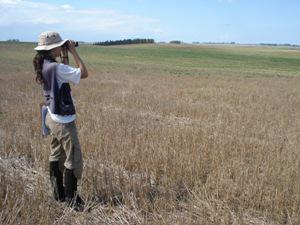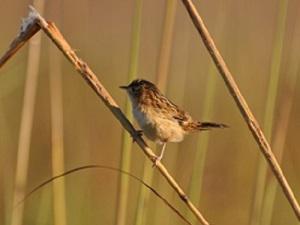Graziela Dotta
The project aims to evaluate the trade-offs between conservation and agricultural production in different land uses in the Pampas grasslands.

Rising demand for food and the emerging extinction crisis are two of the most pressing challenges facing humanity this century. They are also closely linked: agricultural expansion is already the greatest source of threat to biodiversity, underscoring the importance of finding ways to reconcile agricultural production and nature conservation. Recently, two main strategies for achieving this have emerged: “wildlife-friendly farming” and “land sparing”. The first tries to reduce on-farm impacts and maintain high densities of species in farmed landscapes by retaining natural habitat patches and reducing agrochemical inputs. By contrast, “land sparing” attempts to spare wild lands from agricultural development through high-yield farming on the smallest possible area. A recently developed model identifies which approach is best for any given species by evaluating how its density changes in response to changing agricultural yield. Species showing concave density-yield functions are best conserved under WFF, whereas species with convex functions are best protected by high-yield farming coupled with habitat protection.

My questions are: (1) How does the density of different native Pampas species change in response to increasing agricultural yields?, and (2) Based on this density-yield analysis what are the relative merits of WFF versus LS as routes to limit the impact of agriculture on biodiversity in the Pampas?
The main outcome of this project is to provide information that can be used to prioritise conservation actions in the Pampas landscapes. Information on how species change their densities according to the production system, provided by the species specific density-yield functions, can be used to propose alternative management practices in the Pampas. The results can be used in two different scales:
1) Governmental Agencies working on the development and/or application of laws and land use zoning on the Pampas and,
2) NGOs working on the development of strategies concerning land use and conservation in the region, to decide how to allocate their resources between the promotion of wildlife-friendly farming practices, and the protection and restoration of remaining areas of natural grasslands.
Moreover, results will be of interest to conservation-minded landowners who are already developing conservation programmes in the area, and who I will be liaising closely with throughout the project. Finally, as I am working together with Alliance for the Grasslands, results will be largely spread out in the Pampas, not only in Uruguay and Brazil, but in the four countries that are part of the Alliance.